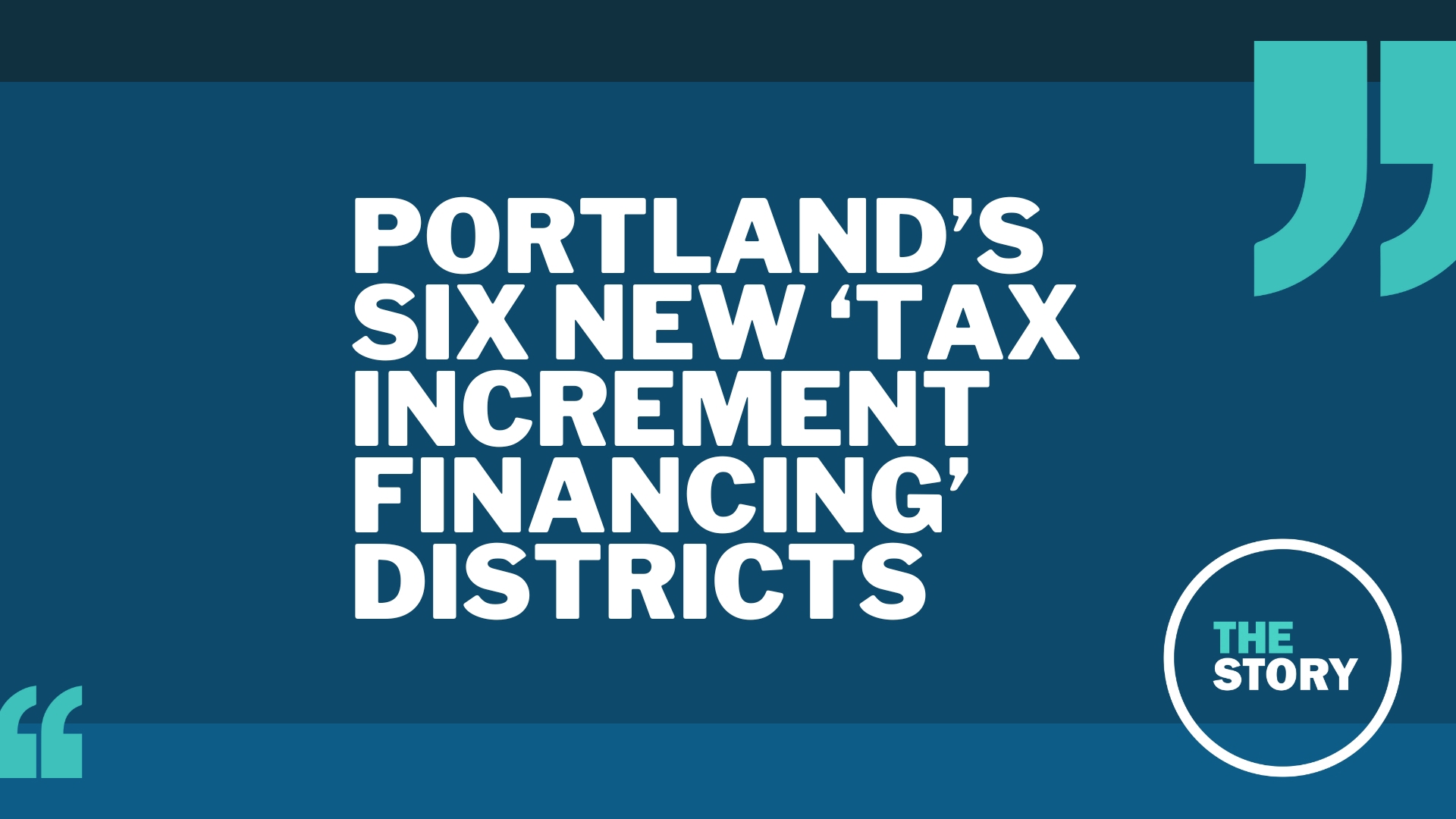PORTLAND, Ore. — About a month ago, Portland City Council approved the creation of six new districts throughout the city with the idea of generating new revenue to invest back into those neighborhoods. They're called "tax increment financing," or TIF districts, and it's an idea that has been around in Oregon for some time and has been applied before in Portland.
It works like this: Now that the city has approved the boundaries of the district, the property tax rate is frozen in time. This doesn't mean that property owners will pay the same rate forever — it'll largely work the same as before on the property owner side. Instead, anything above this year's property tax rate, known as the increment, will go into the TIF fund for that district.
For example, if you own a home in a TIF district and you pay $4,000 in property taxes this year, but then it goes up by $100 next year, you'll still be paying $4,100. The difference is that the additional $100 now goes into the TIF fund to be managed by Prosper Portland and the Portland Housing Bureau for new projects.
Lisa Abuaf, director of development and investment for Prosper Portland, explained how this can work in practice, using the Pearl District as an example.
"We had a development agreement with a developer who owned a number of acres before the Pearl District was the Pearl District, and where we invested as a city is we invested in things like the park sequence. So, if you think about Tanner Springs and Jameson and Neighborhood Park, we invested in the streetcar, so we were the match for pursuing other funding for the streetcar. We invested in affordable housing. So through the Housing Bureau, we invested in affordable housing to make sure that there was mixed-income housing.
"But those tend to be like, 20-plus-year partnerships where we're investing in the infrastructure that's needed to serve the density of development that's coming into sites that largely have either been industrial or just under-built, like the post office has been underbuilt, so that's usually how we come in with infrastructure. The other ... what are other examples? Like, we helped build the Saturday Market permanent home down in Waterfront Park, so, we often are working with kind of nonprofits to support them."
For these new districts, the TIF fund money goes toward large-scale projects like infrastructure, but it can also be used on a smaller scale. Prosper Portland said that they also support the city's cultural institutions, from museums to things like the Portland Mercado.
Those funds can even be used on a micro level. Small business owners can apply for a matching grant, or property owners can apply for loans for property improvements.
Portland's new TIF districts are all over town, but not in every part of the city. One stretches from Old Town to most of downtown Portland. There are several in the Central Eastside and three large ones in East Portland.
While the TIF district idea soared through city council after being introduced by Commissioner Carmen Rubio, some incoming city councilors aren't so sure that it's a good thing. Jamie Dunphy — an incoming city councilor for Portland's District 1, which largely encompasses East Portland — fears that it will run afoul of the same old biases that have left his part of the city underdeveloped.
"I have some deep skepticism about TIF in general," Dunphy told KGW. "I think that it has the potential to be a great tool that could bring targeted, geographically-based development and opportunity to communities that aren't seeing that naturally through the business cycle.
"But I also recognize that it requires a lot of leadership and follow-through that has been lacking in a lot of the previous TIF districts I lived in. Lents, when the Lents TIF district came about, there were promises of walkable, safe communities with community-based assets and small businesses and interesting reasons for people to want to be in the public. And instead, we got a Planet Fitness and an urgent care. It is not the walkable community. It is not small-business-friendly. It is not really the asset that was promised."
Dunphy said the east side needs affordable housing that's big enough for families with kids, so he'd like to see more of that come out of the TIF funds. But as a 30-year project, changes are unlikely to be visible very soon.

